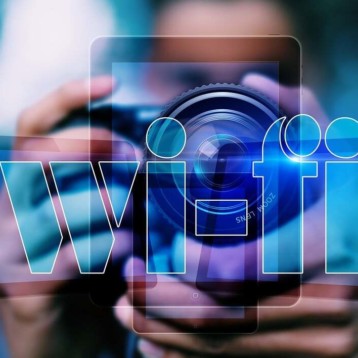
The field of public relations is ever-evolving, reflecting the dynamic nature of communication and media. For students stepping into this vibrant landscape, understanding emerging trends is not just beneficial; it’s essential for staying ahead in a competitive career. As digital technology reshapes the way organizations communicate, PR professionals must adapt swiftly to maintain influence and effectiveness. This article delves into the crucial trends every public relations student should be aware of, providing a roadmap for navigating the future of PR with confidence and creativity.
The Rise of Digital Media Platforms
Digital media continues to dominate the PR landscape, offering new platforms for engagement and message dissemination. As traditional media blends more seamlessly with social media, PR professionals are leveraging these platforms to reach wider and more targeted audiences. Strategies that incorporate the latest social media trends, like short-form videos and influencer collaborations, are becoming fundamental in PR campaigns. For practitioners, this means a continuous learning curve and the need to stay updated with digital innovations that can enhance client visibility and interaction.
Integrating Analytics in PR Strategy
A robust analytics approach is becoming indispensable in public relations, especially for those pursuing a bachelor’s degree in public relations. Understanding data not only helps in measuring the impact of campaigns but also in tailoring strategies to audience needs more effectively. Modern PR education emphasizes the development of analytical skills, equipping students to interpret and utilize data to refine their communication tactics. This trend signifies a shift towards more evidence-based strategies in PR, ensuring every campaign is both creative and measurably effective.
The Importance of Crisis Management Skills
In our interconnected world, a crisis can escalate rapidly, making effective crisis management an essential skill for any PR professional. The ability to respond swiftly and strategically to mitigate damage can define the reputation of a brand. Training in crisis management involves preparing for potential problems, developing communication plans, and executing these plans under pressure. PR students are taught to think critically and maintain composure, ensuring they can protect their client’s interests in any situation.
Content Creation and Storytelling
Content is king in the world of public relations. The ability to create compelling content that resonates with audiences is more crucial than ever. PR professionals must master the art of storytelling, crafting narratives that engage and persuade. This trend calls for a blend of creativity and strategic thinking, where content is not only informative but also emotionally appealing. The focus on quality content pushes PR students to develop strong writing and editing skills, as well as the ability to conceptualize multimedia content that stands out in crowded digital spaces.
Ethical Public Relations: Transparency and Trust
As public scrutiny of media and corporate behavior intensifies, ethical practice in public relations has taken center stage. Transparency and honesty are now not only ethical requirements but strategic imperatives. PR professionals are expected to uphold high ethical standards, fostering trust and credibility. Educators are increasingly embedding these principles in the curriculum, stressing their importance in building and maintaining public confidence. This trend reinforces the role of PR as a guardian of truth, ensuring that integrity is at the heart of all communication.
Personalization in Public Relations
Personalization has become a key strategy in public relations, driven by consumer demand for more tailored experiences. PR professionals are now using technology to segment audiences and customize messages to specific groups. This approach increases engagement and ensures messages resonate more deeply with their intended audiences. For students studying PR, developing skills in advanced audience analysis and segmentation is crucial. Personalization not only enhances campaign effectiveness but also helps build stronger, more meaningful relationships between brands and their stakeholders.
The Expansion of PR Roles
The scope of public relations roles is expanding, incorporating tasks that were traditionally reserved for other departments such as marketing and customer service. PR professionals are increasingly involved in strategic decision-making, helping to shape the overall direction of the organizations they represent. This trend is pushing PR students to acquire a broader skill set, including strategic planning and cross-functional collaboration. Understanding the interconnectedness of various corporate functions and mastering these can significantly increase a PR professional’s value within an organization.
The Impact of Artificial Intelligence on PR
Artificial intelligence (AI) is transforming the public relations field, automating routine tasks and providing new tools for data analysis and audience engagement. From AI-driven content creation to predictive analytics for measuring campaign impacts, the possibilities are vast. For PR students, familiarity with AI tools and technologies is becoming a necessity. Embracing AI can lead to more efficient practices and innovative approaches to traditional PR challenges, setting the stage for future advancements in the field.
The Importance of Visual Communication
In an increasingly digital world, visual communication is becoming vital in public relations. The ability to convey messages through images, videos, and infographics is an essential skill for any PR professional. This trend is influencing PR curricula, encouraging students to develop competencies in visual storytelling and digital content creation. Effective use of visual media can dramatically enhance the appeal and comprehensibility of communications, making them more likely to be shared and remembered.
Sustainability and Corporate Social Responsibility
Sustainability and corporate social responsibility (CSR) are becoming integral to public relations strategies. As consumers and stakeholders increasingly value ethical and sustainable practices, PR professionals must be able to communicate their organization’s commitment to these principles effectively. This trend encourages PR students to understand how to integrate CSR into communication strategies and to communicate these efforts authentically and transparently.
Conclusion
The future of public relations is marked by rapid change and exciting innovation. As digital technologies continue to evolve and public expectations shift, the role of PR professionals will become more complex and integrated into the strategic fabric of organizations. For students embarking on a career in public relations, staying abreast of these trends is crucial. They provide a roadmap for developing the skills and knowledge necessary to succeed in this dynamic field. By understanding and adapting to these trends, future PR professionals can not only anticipate changes but drive them, crafting communication strategies that are not only effective but also ethical, engaging, and forward-thinking.










